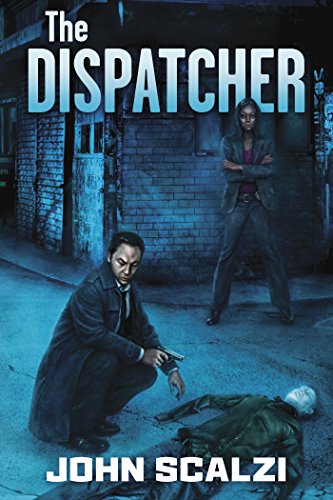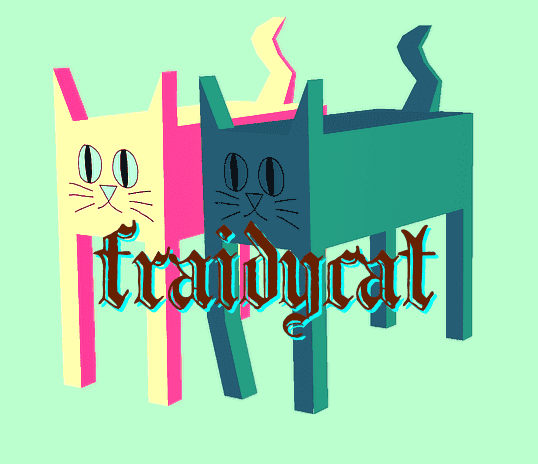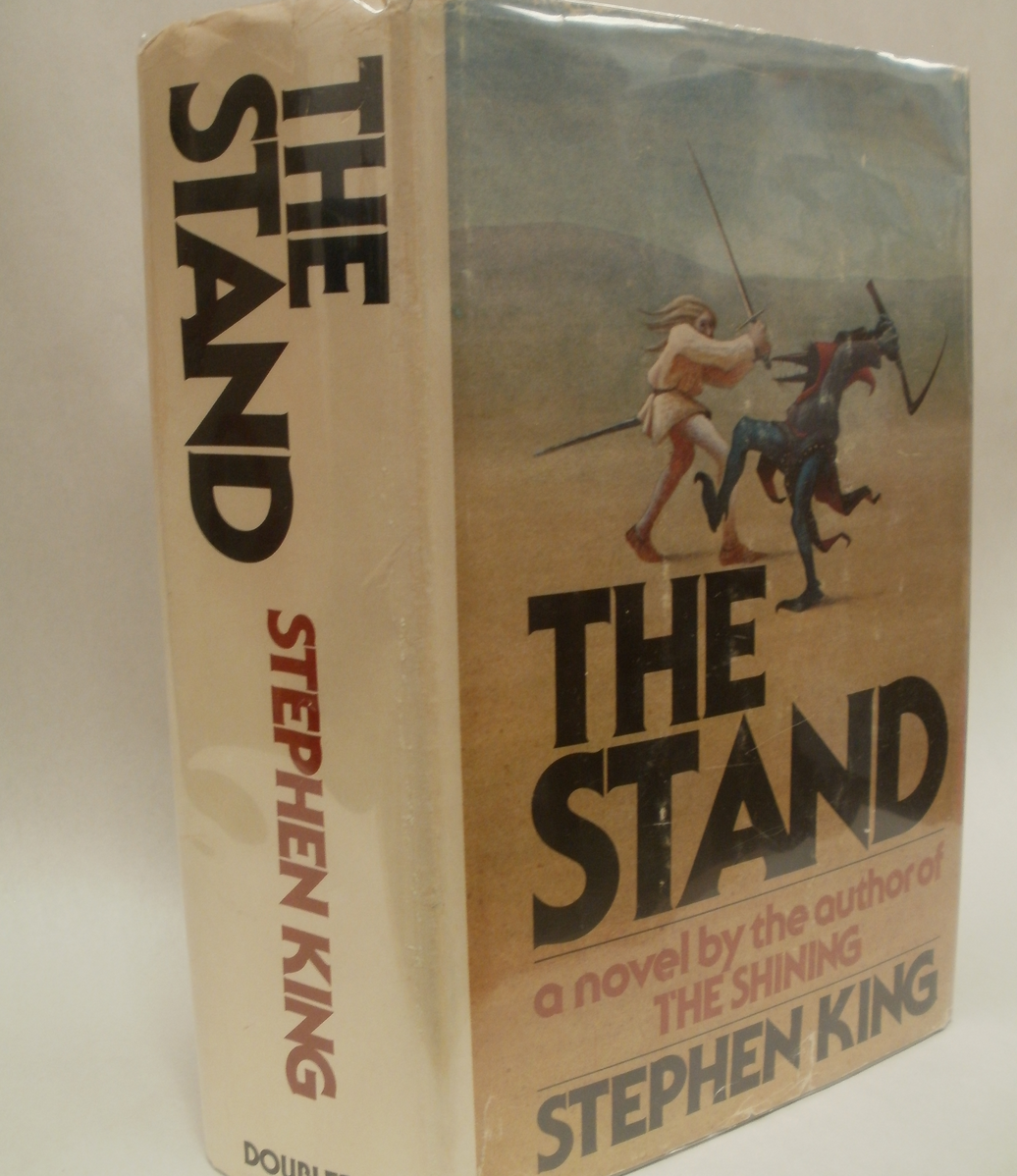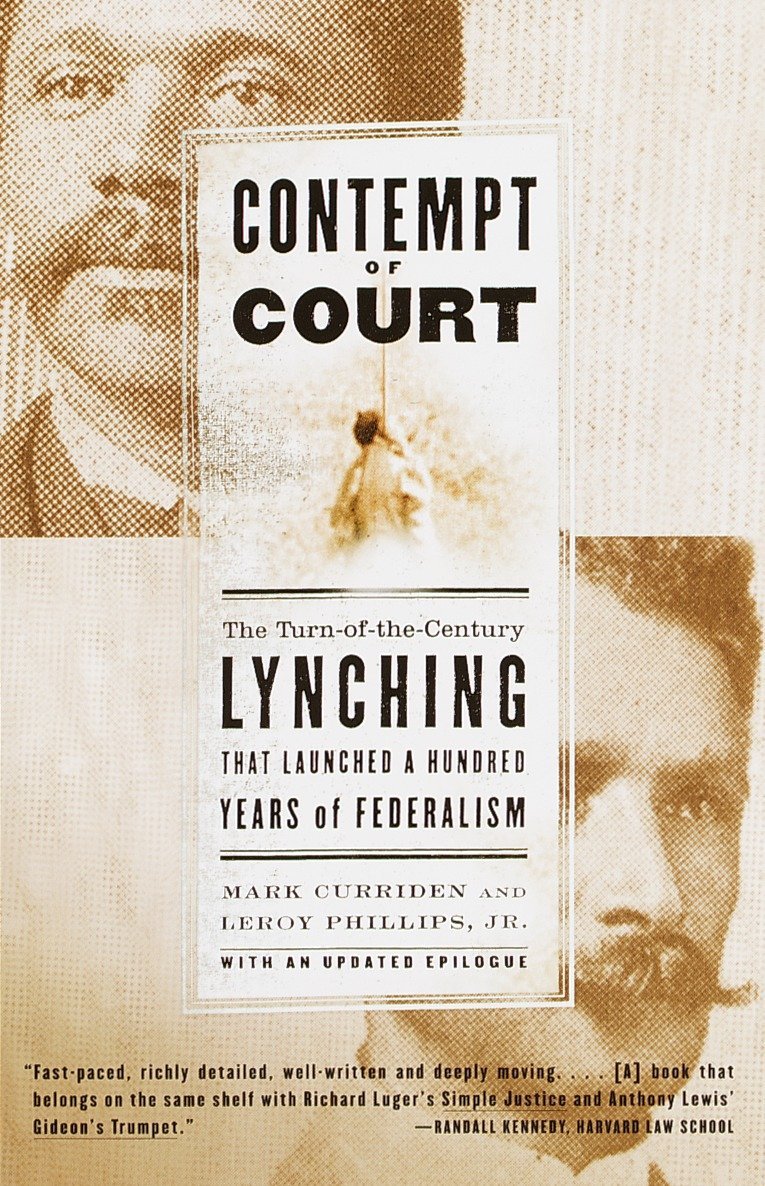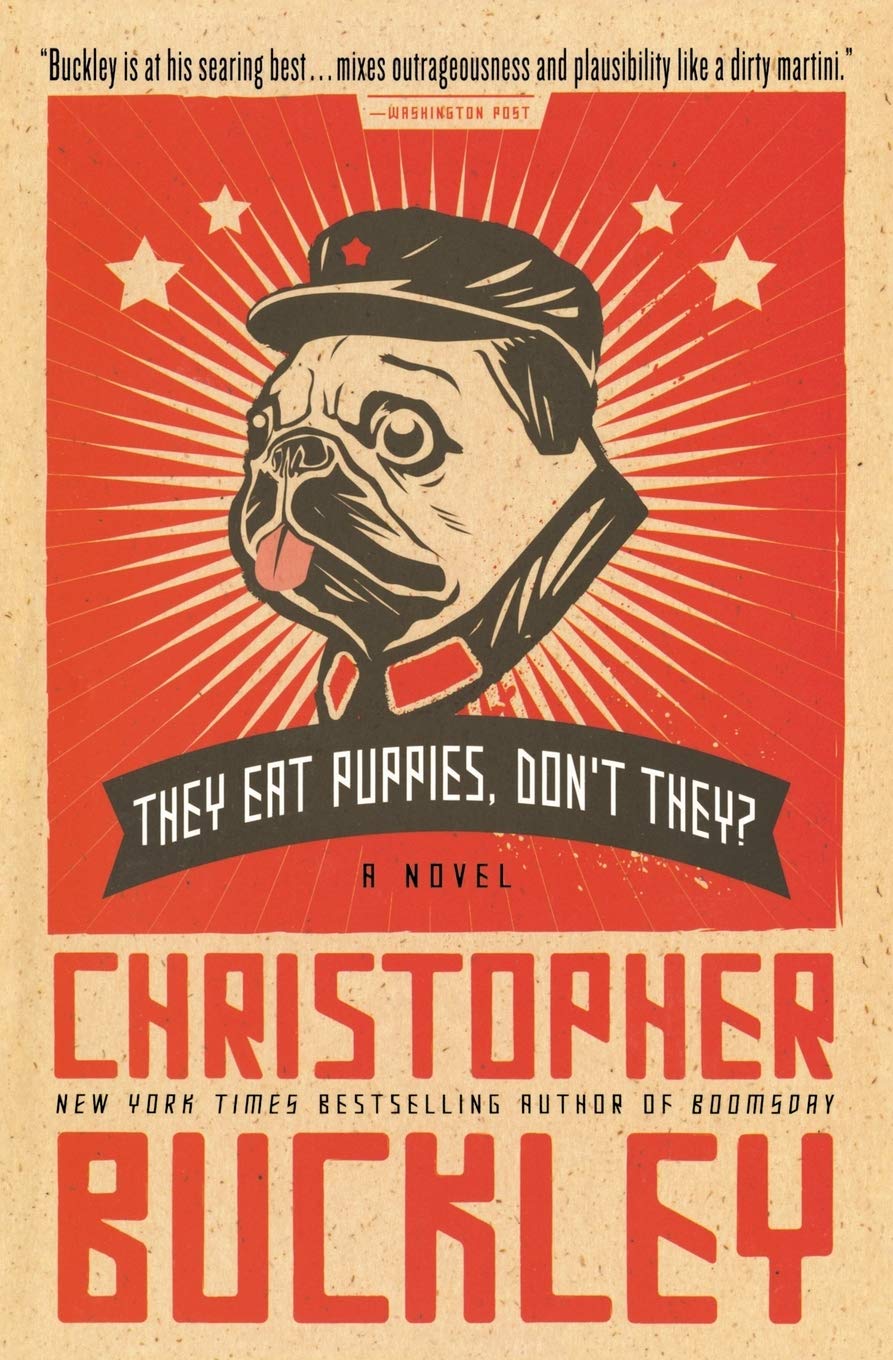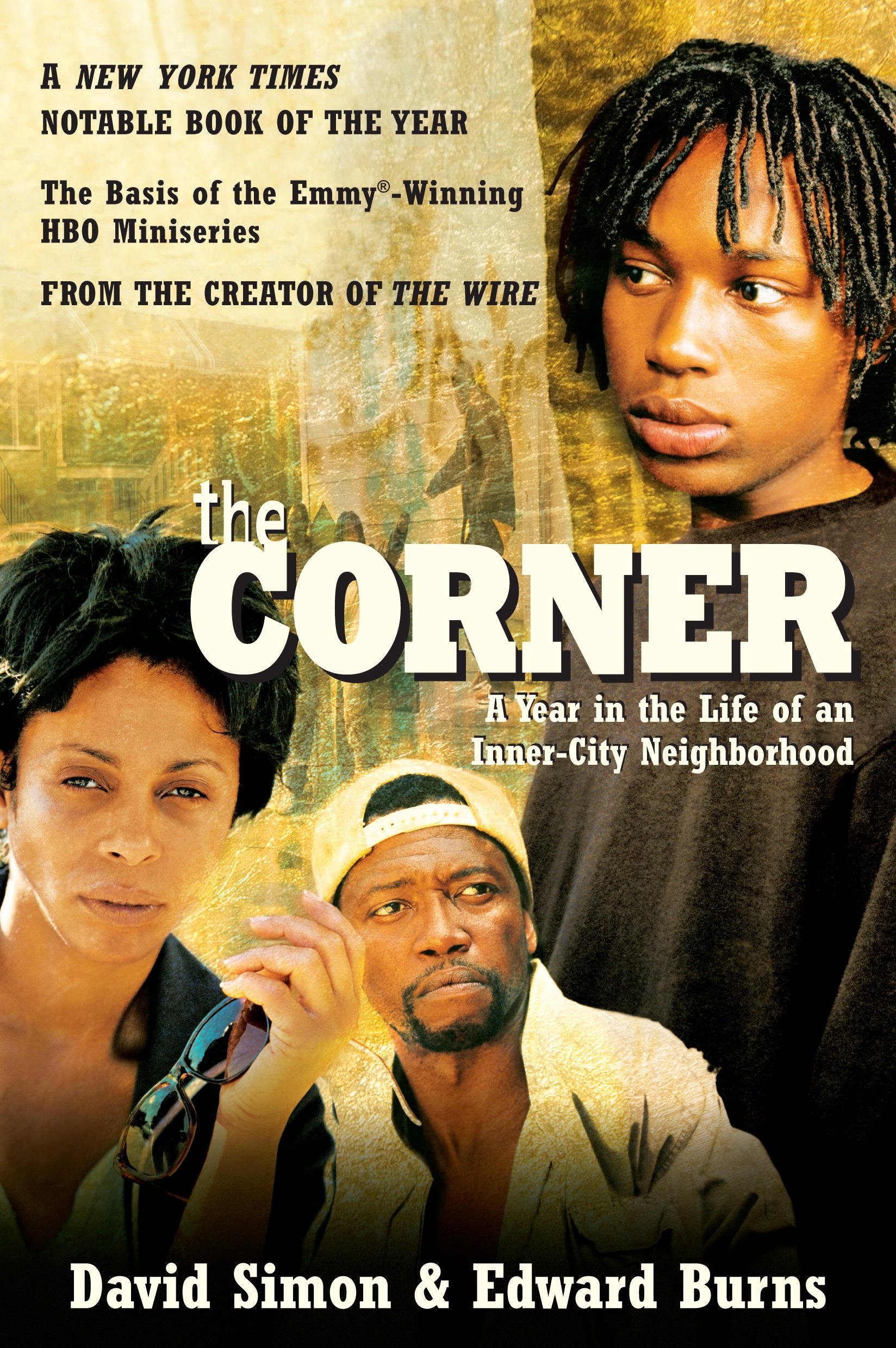We’re nearly three months down for 2024, and I’m still sticking with my resolution to spend less time watching stuff on streaming and more time reading. So far, that’s going pretty well. Since the last update, I’ve finished eight books. Continue reading “Latest books: Midnight in Chernobyl, Red Team Blues, and more”
2024’s reading list, so far…
So far this year, I’ve actually been sticking with my resolution to read more, so I thought I’d share what I’ve read so far with some thoughts on each title. It’s been a good year for fiction with a decent helping of Terry Pratchett, Martha Wells, and Maria Vale. Trying to balance that out with non-fiction, with mixed results. Continue reading “2024’s reading list, so far…”
“The Dispatcher” by John Scalzi
Took me a while to get around to it, but I finally picked up John Scalzi’s The Dispatcher yesterday morning and polished it off before bed. Some mild spoilers (depending on your definition of “spoiler”) below.
Recent books: The Obelisk Gate, Kaiju Preservation Society, All Systems Red
 I’ve done a terrible job keeping up with my reading over the past few years, but have been trying to remedy that recently with some success. In the past few weeks I’ve been getting back into science fiction and fantasy, with The Obelisk Gate, The Kaiju Preservation Society, and All Systems Red. Continue reading “Recent books: The Obelisk Gate, Kaiju Preservation Society, All Systems Red”
I’ve done a terrible job keeping up with my reading over the past few years, but have been trying to remedy that recently with some success. In the past few weeks I’ve been getting back into science fiction and fantasy, with The Obelisk Gate, The Kaiju Preservation Society, and All Systems Red. Continue reading “Recent books: The Obelisk Gate, Kaiju Preservation Society, All Systems Red”
Shakespeare, yea or nay?
 Is Shakespeare mandatory for a well-rounded secondary education? After more than 400 years, it’s reasonable to ask whether the canon is due for an overhaul, or to be chucked out of the window entirely. Continue reading “Shakespeare, yea or nay?”
Is Shakespeare mandatory for a well-rounded secondary education? After more than 400 years, it’s reasonable to ask whether the canon is due for an overhaul, or to be chucked out of the window entirely. Continue reading “Shakespeare, yea or nay?”
Amyl and the Sniffers, Fraidycat web follower, Mogwai
Let’s shake some of my browser tabs and see what falls out.
Fraidycat web follower / feed reader
 RSS has been on the decline since Google snuffed Google Reader. Many sites, these days, don’t even support RSS. It’s a problem.
RSS has been on the decline since Google snuffed Google Reader. Many sites, these days, don’t even support RSS. It’s a problem.
One solution that might fit the bill for many users is Fraidycat. It comes as a standalone app for Linux, macOS, and Windows, as well as extensions for Firefox and Chrome. (I’m currently using the standalone app for the Linux desktop.) The standalone appears to be an Electron app, so I might switch to the Firefox extension.
Fraidycat pros:
- It handles RSS/Atom feeds, and a number of sites that don’t have proper feeds like Twitter, YouTube. Want to follow a YouTube channel outside YouTube? Fraidycat has got you covered.
- It allows you to organize feeds by a free-form system of tags (including emojis) and their importance (Real-time, Frequent, Occasional… etc.).
- Has an import/export system that makes it super-easy to switch from, say, the desktop app to the Firefox extension. Or just export OPML to import into another feed reader, or plain HTML bookmarks.
- Easy to use, intuitive, open source-ish.
Fraidycat cons:
- Doesn’t handle things like Twitter lists, Wikipedia pages that you might want to follow. Coughs up an error when you try to follow these.
- The license is open source-ish. Specifically the Blue Oak Model License which is MIT-ish but not OSI-approved.
- Earlier this year the next release for Fraidycat was “postponed” so the author could work on another project. Hoping it really is just a temporary postponement and not about to become abandonware.
Amyl and the Sniffers
I snagged this EP by Amyl and the Sniffers on the last Bandcamp Friday. It’s raw, joyous and punk-y. I think I might have been 45 seconds into the first track when I decided “yeah, OK, I’ll listen to this again and again.” Released in 2016, but I’d have believed it if somebody it came out in 1983. Assuming live music returns someday, I’d definitely head out to see them live.
[bandcamp width=100% height=120 album=3846936675 size=large bgcol=333333 linkcol=2ebd35 tracklist=false artwork=small]
Short, sweet, noisy. Give it a listen, loud.
Mogwai – It’s What I Want To Do, Mum
Song I stumbled on while testing out Fraidycat. Instrumental goodness.
[youtube https://youtu.be/tFUGspVnZFQ]
Gimmie something I wouldn’t usually read…
If you are entirely unlike me and need reading suggestions (vs. having a stack of books taller than you that need reading), then I have a great site for you.
Break the Bubble will give book suggestions that are “bubble breakers” for books you might be unlikely to stumble on, usually. Give it The Hitchhiker’s Guide, A Prayer for Owen Meany, and Post Office by Charles Bukowski and it suggests I might want to read Dread Nation by Justina Ireland or My Life as a White Trash Zombie by Diana Rowland. (Also a “Captain Underpants” title, so there may be a few glitches in terms of age appropriateness.)
That’s it for today’s Link-o-Rama. What else should I be looking at on the Web?
Not with a bang, but a whimper: The Stand collapses
 Stephen King, and all of us, keep coming back to The Stand trying to get it right. First published in 1978, The Stand has been re-issued with an additional 500 or so pages in 1990, adapted as a miniseries in the early 90s, a comic series by Marvel from 2008 to 2012, and yet another miniseries this year courtesy of CBS All Access. Despite a solid start, the latest attempt at getting The Stand right falls apart and fails to do justice to the source material.
Stephen King, and all of us, keep coming back to The Stand trying to get it right. First published in 1978, The Stand has been re-issued with an additional 500 or so pages in 1990, adapted as a miniseries in the early 90s, a comic series by Marvel from 2008 to 2012, and yet another miniseries this year courtesy of CBS All Access. Despite a solid start, the latest attempt at getting The Stand right falls apart and fails to do justice to the source material.
Adapting books to television or movies is hard. Even your average novel that only weighs in at 300 pages or so contains more than you can cram into a movie, and is either too much or too little to do well over the course of a series. Game of Thrones loosely adapted one book per season for HBO, and still shed characters and events, combined book characters into a single person to keep things simpler, and so forth.
The Stand tried to do too much in too little time, and even tried to introduce a new ending that was as unsatisfying as it was unnecessary. (If you haven’t watched the show and plan to, beware there are spoilers ahead.) Continue reading “Not with a bang, but a whimper: The Stand collapses”
[Review] Contempt of Court: The Turn-of-the-Century Lynching that Launched a Hundred Years of Federalism
 More than 100 years ago in Chattanooga, Tennessee, a black man named Ed Johnson was dragged from his jail cell and taken to the Walnut Street Bridge and lynched. That Johnson was almost certainly innocent, and that he was already condemned to die by hanging, mattered not at all to the mob that wanted to see “justice” done swiftly, and resented the federal government’s intrusion into the state of Tennessee’s justice system.
More than 100 years ago in Chattanooga, Tennessee, a black man named Ed Johnson was dragged from his jail cell and taken to the Walnut Street Bridge and lynched. That Johnson was almost certainly innocent, and that he was already condemned to die by hanging, mattered not at all to the mob that wanted to see “justice” done swiftly, and resented the federal government’s intrusion into the state of Tennessee’s justice system.
Contempt of Court is a detailed account of the trial of Ed Johnson, the futile attempts at appealing to state and federal courts to save his life, and the subsequent decision that opened the door to federal oversight of state courts.
It would probably surprise many people today to learn that it was generally not believed that the Bill of Rights applied to the states. That is, it was not assumed that states had to abide by the Bill of Rights — courts held that the rights against unreasonable search and seizure, the rights against self-incrimination, etc., were protections against the federal government only. Thus, a man like Ed Johnson tried in state court had no protections or guarantees of a fair trial granted by the federal government.
Written by Mark Curriden and Leroy Phillips, Jr., Contempt of Court is an extremely well-written and researched account from the impact on the individuals involved in the trial and lynching, to the impact of the legal decisions on the rest of the country.
It is a sad fact that Johnson’s lynching was not unusual, excepting the resulting trial held by the United States Supreme Court that found the town sheriff and several members of the mob guilty of contempt of court. Curriden and Phillips take care to put Johnson’s case in context, lest the reader think that Johnson’s case received special attention because it was so horrific.
It was against the odds that Johnson’s appeal would be heard by the Supreme Court, and the contempt charges that the court levied against the sheriff and members of the mob were unique. The Supreme Court had not held a trial of the sort before, nor since.
The authors have done a masterful job of telling the story and making it engaging, without shying away from explaining the legal issues to the layperson. It paints a bleak picture of life in the 1900s south, and what it meant to a black person accused of a crime against a white person – or to be a white person who committed the sin of trying to defend a black man accused of a crime.
I give Contempt of Court very high marks on all counts. Its writing is solid and compelling. The book delivers on the promise of its title and topic, and it’s really something that anyone living in the U.S. should read.
Weekend Reading: “They Eat Puppies, Don’t They?” and “No Country for Old Men”
Knocked down a couple of fiction books this weekend while traveling to and from Southeast LinuxFest. They Eat Puppies, Don’t They? by Christopher Buckley, and No Country for Old Men by Cormac McCarthy.
I’ve been a fan of Christopher Buckley since I picked up Little Green Men years ago, but he’s probably best known for Thank You for Smoking. (It may be a cliche, but the book truly is better than the film – and the film’s plot diverges pretty heavily from the novel.)
They Eat Puppies is billed as political satire of the relationship between the U.S. and China, but it’s really a farce using China and U.S. relations as a framework. It was a quick read, I got a few chuckles out of it, but it’s far from Buckley’s best work. It’s sitcom-quality humor, and makes for good light reading, but I would be hard-pressed to give it a strong recommendation. If you like Buckley’s other work and want some lightweight reading, give it a try. If you haven’t read Buckley’s other work, pick up Thank You for Smoking and save They Eat Puppies for a long flight when you really just need a distraction. (It was a great palette cleanser after finishing The Corner.)
No Country for Old Men is a quick read, but I don’t think you could call it light reading. I suppose it’s a great novel for people who find Steven King horror novels too uplifting.
On the surface, No Country is a tale about a welder who finds a satchel full of cash at the scene of a drug deal gone bad – and the unrelenting assassin who comes after the money and drugs. It goes deeper than that, though. The primary themes is societal decay, and how one person chooses to react in the face of the decay.
Having seen the movie, I was eager to read the book and get a little deeper into the characters and gather some understanding of Anton Chigurh. On that front, I was disappointed, as the book doesn’t really get into any deep characterizations or go into Chigurh’s thoughts. If you’ve seen the film, you can probably safely skip the book, unless you just really enjoyed the film and would like to relive it with a bit more detail. (I will say that the book is totally unambiguous on a point that the film is slightly queasy about showing explicitly.)
(Post rescued from the dustbin of history by Archive.org and copy/paste. Originally posted on Zonker.net.)
[Review] The Corner: A Year in the Life of an Inner-City Neighborhood
A few years ago, I came late to The Wire, but caught up quickly. Usually I’m not one to buy the hype for television series, but I had to admit that The Wire was every bit as powerful, funny, and eye-opening as its fans claimed. It’s a show that you tell friends “you need to watch this” rather than “you’ll really enjoy it,” because they really do need to watch it.
The Wire is necessary because it actually provides a glimpse into the reality of ground zero in the War on Drugs – a topic that any person (at least in the U.S.) should be well-educated on, but probably is not. And if The Wire is required watching, the book that preceded and inspired it should be required reading. It should be required reading, starting in jr. high if not sooner.
The Corner: A Year in the Life of an Inner-City Neighborhood, by David Simon and Edward Burns, is as gripping and compelling as any work of fiction I’ve ever read. But it has the virtue of being a true story, and true journalism. Simon and Burns spent months getting to know the subjects in the book, then a solid year following their lives on the corner. Interviews, observation, and follow-ups after the year was over.
The Corner gives a first-hand look at what life is like for those living in the middle of one of the worst neighborhoods in the United States. It provides a look at what growing up in poverty is really like, and why it’s not just as simple as “pulling yourself up by your bootstraps.” It might surprise people to learn that the corner that Simon and Burns chose is near the birthplace of H.L. Mencken, the sage of Baltimore. The world of Mencken and the world of teen drug slingers and desperate dope fiends are separated only by a few decades and less than a mile.
And The Corner tells the tale from the beginning. Simon and Burns cover the scope of Baltimore’s downfall, from the early 1900s when the McCullough family first settled into Baltimore, through four generations of McCulloughs. From stand-up citizen and family man, to his fallen son who essentially abandons his son to pursue his addiction, to a teen who plays at slinging drugs and fathers his own son while still too young to drive. This is how fast our cities decay.
You’ll find some hope, but not much, at the end of the book. The book is set in 1994, and published in 1997. More than a decade and a half later, we know how the story goes for many of the people in the book.
As a work of journalism, I’m simply in awe. We need so much more of this. I can’t say that I “loved” the book in the same way I enjoy a good book of fiction or entertaining non-fiction. After 500+ pages, I was ready to leave this world behind and only regretted that there isn’t more of Simon’s work out there to take on next. (Simon has only two books to his name, this and Homicide: A Year on the Killing Streets.) This book is a five out of five stars, perhaps six. It should certainly be required reading for anyone who aspires to have an opinion about the war on drugs or welfare policy in the United States.


